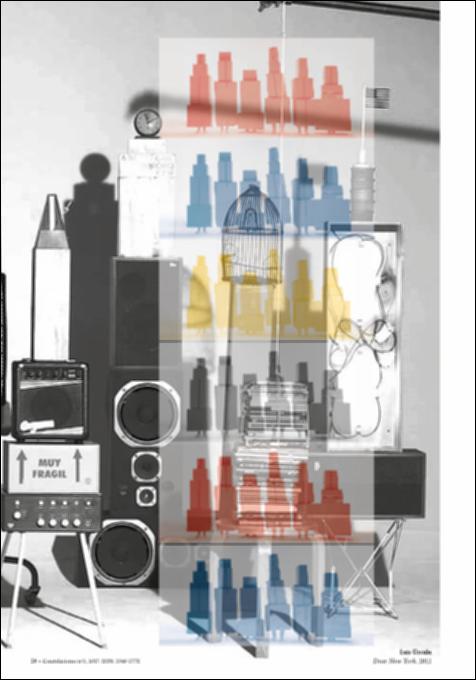Please use this identifier to cite or link to this item:
http://hdl.handle.net/10637/11878Ecos del movimiento de Stijl en la obra de Eileen Gray.
| Title: | Ecos del movimiento de Stijl en la obra de Eileen Gray. Echoes of the De Stijl Movement in Eileen Gray's Work |
| Authors : | Moreno Moreno, María Pura |
| Keywords: | De Stijl.; Eileen Gray.; Sinergia.; Mobiliario.; Arquitectura.; Synergy.; Furniture.; Architecture. |
| Abstract: | Este artículo expone la influencia del Movimiento De Stijl en la obra de
Eileen Gray gracias al hallazgo de interconexiones temporales en publicaciones
y exposiciones, pero sobre todo al análisis sintético de los proyectos
y su confrontación. El aprendizaje autodidacta de Eileen Gray se
fundamentó tanto en la observación crítica al arte y la arquitectura de su
contexto, como en sus propias inquietudes y destrezas. El vínculo de su
producción con los movimientos de vanguardia holandeses se remonta
a sus inicios como diseñadora cuando, por ejemplo, su instalación Boudoir
de Monte-Carlo, situada en el Salon des Artistes Décoráteurs de París
(1923) tuvo eco en la revista de difusión de la Escuela de Amsterdam,
Wendingen (1924).
Los postulados del grupo De Stijl asumieron la revolución visual del cubismo
vinculada a la concepción espacial, y su repercusión inmediata en
proyectos de arquitectura y diseño fue generalizada en la obra de autores
observadores como Eileen Gray. This article exposes the influence of the De Stijl movement in Eileen Gray's work being based on the finding of temporary interconnections on publications and exhibitions, but especially on the the synthetic analysis of the projects and works and their confrontation. Eileen Gray's self-taught learning was based on both, the critical remark to the art and architecture of her context and in her own interests and skills. The link between her work and the Dutch avant-garde movements goes back to her beginnings as a designer when, for example, her installation Boudoir for Monte-Carlo, placed in the Salon des Artistes Décoráteurs in Paris (1923) had an important impact in the magazine of the Amsterdam's School, Wendingen (1924). De Stijl Group's postulates assumed the visual revolution of cubism, linked to the spatial conception, and its immediate repercussion in projects of architecture and design was widespread in the work of observers authors such as Eileen Gray. |
| Description: | En: Constelaciones. ISSN. 2340-177X. n. 5, 2017, pp 15-26 |
| URI: | http://hdl.handle.net/10637/11878 |
| Rights : | http://creativecommons.org/licenses/by-nc-nd/4.0/deed.es |
| Issue Date: | 1-May-2017 |
| Appears in Collections: | Núm. 5 (2017) |
Items in DSpace are protected by copyright, with all rights reserved, unless otherwise indicated.


